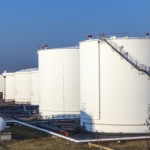Australian dollar lost ground against its US counterpart on Monday on speculation that Australias economic growth may be lagged in comparison with growth US economy has recently demonstrated.
AUD/USD slipped to a session low at 0.9074 at 7:25 GMT, after which consolidation followed at 0.9079, losing 0.27% for the day. Support was likely to be received at December 3rd low, 0.9058, while resistance was to be encountered at December 3rd high, 0.9146.
The Aussie snapped a two-day advance against the greenback, as speculation appeared that Australian economic growth may lag the improvement, recently demonstrated by US economy.
Reserve Bank of Australia (RBA) Governor Glenn Stevens used the same tone as at bank’s previous meeting, stating that the national currency was “still uncomfortably high” and that a lower Aussie “is likely to be needed to achieve balanced growth in the economy”. These comments followed central banks decision last week to maintain its benchmark interest rate unchanged at the record low level of 2.50%.
Swaps data by Bloomberg revealed that traders saw a 37% probability that RBA policymakers will reduce borrowing costs by June next year.
In addition, earlier on Monday the Australia and New Zealand Banking Group (ANZ) reported that the number of job advertisements in Australia dropped 0.8% in November compared to October, following a 0.1% dip in the preceding month.
The yield on Australian three-year government bonds decreased five basis points, or 0.05 percentage point, to reach 3.08%. The yield on nations 10-year bonds declined six basis points to 4.37%.
Meanwhile, on Friday it became clear that US economy managed to add 203 000 new jobs in November, after the number of added jobs in October has been revised down to 200 000 from 204 000 previously. Experts had projected that private sector in the country will add 183 000 job positions in November. Non-farm payrolls in September and October have been revised up by 8 000.
At the same time, the rate of unemployment in the United States fell to 7.0% in November, marking its lowest level in five years, after in October the rate stood at 7.3%. Preliminary estimates pointed a decrease to 7.2% in November.
Employment data came out a day after it became clear that nation’s preliminary Gross Domestic Product grew at a 3.6% annualized rate during the third quarter of the year, up from an initial estimate of 2.8%. The revised GDP figure also appeared to be the strongest since Q1 2012.
Elsewhere, the Australian dollar was lower against the euro, with EUR/AUD cross up 0.19% on a daily basis to trade at 1.5085 at 7:59 GMT. AUD/NZD pair was falling 0.33% to trade at 1.0956 at 7:59 GMT.





